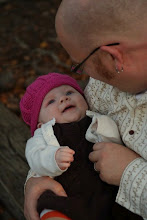Here's another installment of the Hart stuff...
I have to admit at this point I was beginning to lose the line of argument from Hart’s original goal of brining faith back into the public realm. I questioned if I would understand his main point in writing the book. I also questioned how a theology that constantly adapted itself would have any sort of strength or authority. However, as I moved through the final chapter of the book, it all began to come together for me. In chapter ten, Hart brilliantly begins to show that while Christian theology must be open to criticism and reformation by our current cultural trends to remain coherent and integrated, it must also genuinely criticize and reform the culture it is coming up against. He acknowledges that it must be allowed to be reshaped and reformed in the light of new learning and insights, but also must at some point be allowed to stand out from the rest and offer an alternative way of thinking. Finally, Hart wrapped it all up for me in chapter eleven He suggests that we must recognize that our knowledge is not reality itself, but “a product of a transaction between the universality of the created order and the irreducible particularity of our personal standpoints, physical, intellectual and otherwise (p. 224).” Therefore we must put ourselves in a position to get the best possible view of reality. He goes on to suggest that we discover these positions through taking a stance or making a commitment on faith and then refining that through open dialogue with reality. Hart suggests that tradition, as he defined it, is this dialogue over time. He reveals that this reality is none other than God himself and his created order. In other words, faith must enter the public dialogue again if we are to expect a closer understanding of reality because we can only come into dialogue with God through faith.
I have to admit at this point I was beginning to lose the line of argument from Hart’s original goal of brining faith back into the public realm. I questioned if I would understand his main point in writing the book. I also questioned how a theology that constantly adapted itself would have any sort of strength or authority. However, as I moved through the final chapter of the book, it all began to come together for me. In chapter ten, Hart brilliantly begins to show that while Christian theology must be open to criticism and reformation by our current cultural trends to remain coherent and integrated, it must also genuinely criticize and reform the culture it is coming up against. He acknowledges that it must be allowed to be reshaped and reformed in the light of new learning and insights, but also must at some point be allowed to stand out from the rest and offer an alternative way of thinking. Finally, Hart wrapped it all up for me in chapter eleven He suggests that we must recognize that our knowledge is not reality itself, but “a product of a transaction between the universality of the created order and the irreducible particularity of our personal standpoints, physical, intellectual and otherwise (p. 224).” Therefore we must put ourselves in a position to get the best possible view of reality. He goes on to suggest that we discover these positions through taking a stance or making a commitment on faith and then refining that through open dialogue with reality. Hart suggests that tradition, as he defined it, is this dialogue over time. He reveals that this reality is none other than God himself and his created order. In other words, faith must enter the public dialogue again if we are to expect a closer understanding of reality because we can only come into dialogue with God through faith.


0 Comments:
Post a Comment
<< Home